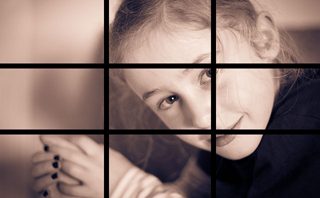 Hello, all, I hope you’ve had a great Christmas and are looking forward to what the new year can bring you.
Hello, all, I hope you’ve had a great Christmas and are looking forward to what the new year can bring you.
I had some other ideas for this months article, but then my nephew was given his first proper camera for Christmas and this got me thinking; I often get asked which camera is the best and the answer I usually give is the one that you have with you.
It doesn’t matter how wonderful a piece of gear you have, if you don’t have it with you, the picture will be missed. Conversely, even if you have the best camera in the world and don’t know how to compose an image, you will not be able to take good pictures.
Owning a wonderful laptop does not make you a writer and owning a good camera does not make you a photographer. So in this article I’m not going to talk settings or cameras, but composition. This is what makes a photograph and a well composed picture taken on your phone will beat a poorly composed picture on an expensive DSLR.

There are a few rules of photography. Now, I don’t like the term ‘rules’ but it pays to learn them and then, when you want to break them, you knowingly can. These rules tend to be about how to compose your picture. However the first rule of photography is enjoy your photography, the second rule of photography is enjoy your photography.
Now, for the third rule – the rule of thirds – this is the one rule to rule them all and in your albums bind them. It may seem logical to place you subject in the centre of your image… wrong. It may sound counter intuitive but usually your subject is best off centre, it is best to place them on the thirds.

When you look through your viewfinder or at the back of your camera, imagine two horizontal lines and two vertical lines evenly spaced across the image.
This divides it into thirds, both horizontally and vertically. What you should attempt to do is place the subject of your photograph near one of these lines, or ideally on one of the intersections. This gives a balance to the picture that the eye seems to find pleasing.
When you understand this rule, start looking around at existing images and you will notice that the majority will follow this rule.

This rule applies in just about any situation. In the shot of the dawn at Portscatho, I’ve placed the horizon on the lower horizontal line and have left plenty of sky to give you a feeling of space.
In the picture of my daughter, Grace, the eyes are on the thirds. It doesn’t have to be exact, but the line of her face, eye, nose and mouth, approximately follows the line.

This picture above also raises one of the most important rules for portrait photography. This applies to any living things from dragonflies to people: make sure the eyes are in focus. Our eyes are what we use to connect with everything and if they are not focused, the picture rarely works.
It’s always goods to give your subjects space to move into. This is especially important for moving subjects. They should be entering the frame, not leaving it.

It may seem sensible to take pictures at your eye level and of course this can work, however, to give your pictures something else, try changing your viewpoint. Try moving your camera up or down.
Getting down with kids and animals is something as a photographer you need to do and I don’t mean speaking the lingo, but getting down to their eye level. A picture taken at their height will look much better than one taken looking down.

So, in review, try and place the subject on the thirds, give them space, and try different view points.
There are many other rules in photography and I will not go into them now, but when you feel you’ve understood the rule of thirds, try thinking about these:
- lead in lines
- repetition
- symmetry
- foreground interest
Wishing you all the best for a new year and, to paraphrase a certain show, Keep Clicking.
Barney Nicholls

